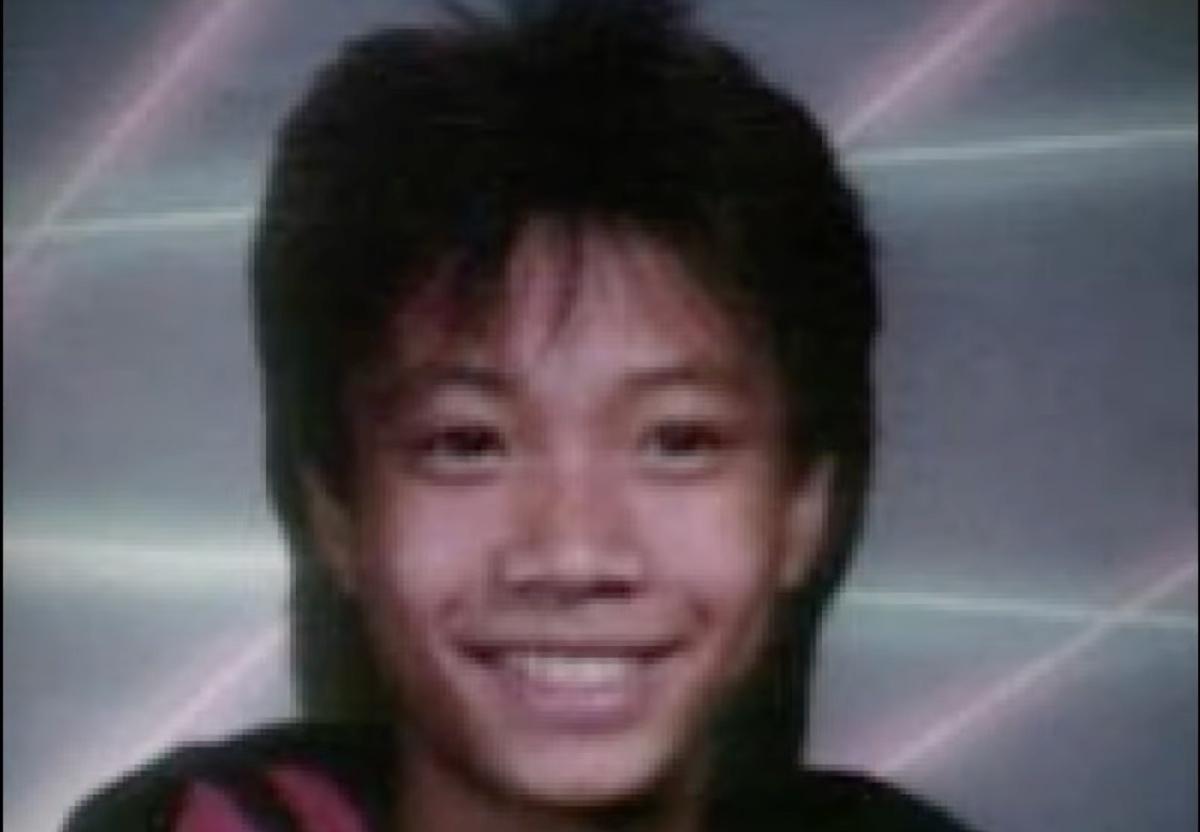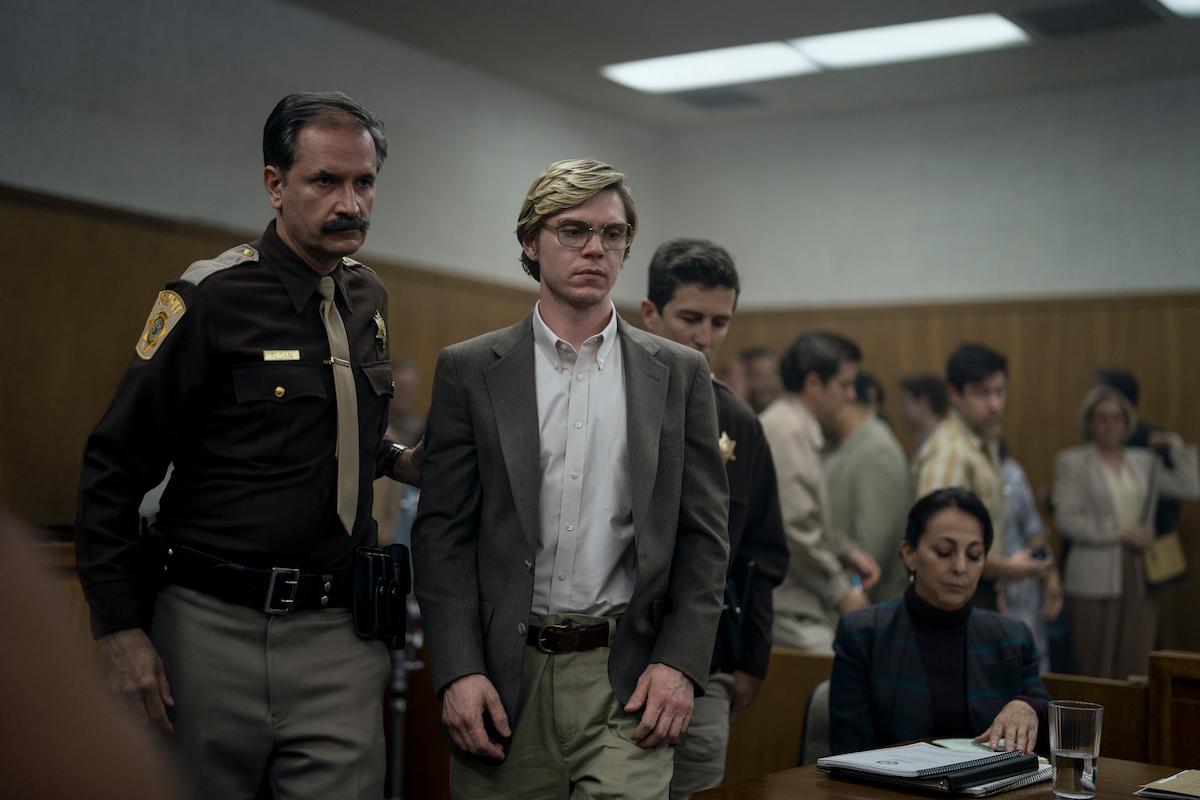Konerak Sinthasomphone Parents: A Family's Enduring Story Of Hope And Heartbreak
The story of Konerak Sinthasomphone's parents, Sounthone Sinthasomphone and Somdy Phoutthakyo, is one that truly speaks to the depths of human resilience and sorrow. It's a narrative that begins with the hope of a new start, a journey across continents in search of something better. This family, like so many others, sought refuge and opportunity, only to face an unimaginable tragedy that would forever alter their lives. Their experience, in a way, shows us how life can take the most unexpected, painful turns, even when people are just trying to find peace and a safe place to call home.
Konerak, a young Laotian boy, became a victim of Jeffrey Dahmer, a name that, you know, still brings a chill to many. His murder in 1991, at just 14 years old, cast a long shadow over the Sinthasomphone family, a shadow that, arguably, has never truly lifted. This terrible event brought to light not only the horrific acts of a serial killer but also, perhaps more importantly, the profound failures of the system meant to protect innocent lives.
So, we're going to explore the journey of Konerak Sinthasomphone's parents, Sounthone and Somdy, as they navigated a life marked by profound loss and a relentless pursuit of justice. Their story is a powerful reminder of the human cost of such crimes and the enduring strength required to keep going, even when everything feels broken. It’s a very personal look at how a family copes when their world is, quite literally, shattered into pieces, and how they, in a way, found the courage to speak out.
- Lilithberry Nude
- Jhony Sins
- Mark Singer Gorilla Glue Passed Away
- Pia Ricci
- How Long Is The Morgan Wallen Concert 2025
Table of Contents
- Konerak Sinthasomphone: A Brief Biography
- The Family's Journey: From Laos to Milwaukee
- The Unthinkable Tragedy and Systemic Failures
- The Fight for Justice and Accountability
- A Path Through Grief and Healing
- Frequently Asked Questions about Konerak Sinthasomphone Parents
Konerak Sinthasomphone: A Brief Biography
Konerak Sinthasomphone, whose life was, you know, tragically cut short, was a young boy with a future that should have been full of possibilities. Born in Laos, he was the youngest child of Sounthone Sinthasomphone and Somdy Sinthasomphone (also referred to as Somdy Phoutthakyo in some accounts). His family, seeking a better life, made the difficult decision to leave their homeland, a decision that, in some respects, led them to Milwaukee, Wisconsin.
At the time of his death, Konerak was just 14 years old, a teenager on the cusp of truly growing up. He, along with his seven siblings, had fled Laos in 1979, first to a refugee resettlement camp in Thailand, and then, in 1980, to Milwaukee. This move was driven by a powerful desire for new opportunities and a safer environment away from communist Laos. Konerak, being the baby of the family, could barely remember the long trip, but the hope it represented was something his parents deeply felt.
His story, tragically, became intertwined with that of Jeffrey Dahmer, a serial killer who had, you know, already committed terrible acts. Konerak was Dahmer's 13th victim, and his case, perhaps more than any other, highlighted the grave errors made by law enforcement. He was a young boy who, in a way, almost got away, escaping Dahmer's apartment only to be returned by police who, very wrongly, believed Dahmer's lies. His life, so full of potential, was brutally ended on May 27, 1991.
- Disney Removing American Flag
- Camilla Araujo Only Fans Leaked
- T%C3%BCrbanl%C4%B1 Sotwe
- Patrick G Jackson
- Deepnude
Personal Details and Bio Data of Konerak Sinthasomphone
| Full Name | Konerak Sinthasomphone |
| Parents | Sounthone Sinthasomphone and Somdy Sinthasomphone (also Somdy Phoutthakyo) |
| Date of Birth | Unknown (Born in Laos) |
| Date of Death | May 27, 1991 |
| Age at Death | 14 years old |
| Place of Birth | Laos |
| Place of Death | Milwaukee, Wisconsin, USA |
| Nationality | Laotian (immigrated to USA) |
| Siblings | Seven, including Somsack Sinthasomphone |
| Cause of Death | Murdered by Jeffrey Dahmer |
The Family's Journey: From Laos to Milwaukee
The Sinthasomphone family's journey to America was, in a way, a testament to their hopes for a brighter future. Sounthone and Somdy, Konerak's parents, along with their eight children, made the courageous decision to leave Laos in 1979. They were, you know, searching for better opportunities, a life free from the constraints of their home country. This was a common story for many families at that time, seeking refuge and a chance to build something new.
Their path led them first to the Nonkai refugee resettlement camp in Thailand. This was a temporary stop, a place where they, in a way, gathered themselves before the next big step. From there, in 1980, they finally made their way to Milwaukee, Wisconsin. This city became their new home, a place where they hoped to plant roots and provide a stable, promising life for their children. It was, apparently, a fresh start for everyone.
Life in Milwaukee, however, brought its own set of challenges. The family, like many immigrants, faced financial difficulties. Konerak and his brother, Somsack, both tried their best to help out, contributing to the family's well-being. This sense of shared responsibility and mutual support was, you know, a very strong part of their family dynamic. They were, in a way, working together to build a better tomorrow, despite the daily struggles they encountered.
The Unthinkable Tragedy and Systemic Failures
The Sinthasomphone family had already endured a terrible ordeal involving Jeffrey Dahmer before Konerak's murder. In 1988, Somsack Sinthasomphone, Konerak's older brother, was sexually abused by Dahmer. Somsack, you know, managed to escape and reported the incident to the authorities. This led to Dahmer's arrest and conviction, and he was, in a way, placed on probation for the molestation. This earlier incident should have, you know, been a clear warning sign, a very loud alarm that something was deeply wrong.
Yet, despite Dahmer being on probation for molesting Somsack, the system, tragically, failed Konerak. On May 26, 1991, Jeffrey Dahmer met Konerak on Wisconsin Avenue. Konerak, who was, you know, quite young and could be easily manipulated, was lured back to Dahmer's apartment with the promise of a few drinks. What followed was a horrific ordeal, one that, in a way, speaks to the utter darkness of Dahmer's actions.
Konerak, heavily drugged, actually managed to escape from Dahmer's apartment. He was disoriented and bleeding, and his cries for help alerted neighbors, including Glenda Cleveland, her daughter Sandra Smith, and her niece Nicole Childress. They, you know, quickly called the police, believing they were helping a boy in distress. This was, in a way, Konerak's chance, a moment where safety seemed, almost, within reach.
But what happened next was a devastating error. When police officers arrived, they, you know, encountered a very confused Konerak and a seemingly calm Jeffrey Dahmer. Dahmer, with incredible deception, convinced the officers that Konerak was his adult lover and that they were simply having a domestic dispute. The officers, tragically, believed his lies and, in a way, returned Konerak directly to Dahmer's apartment. This decision, a very grave mistake, sealed Konerak's fate. He was brutally murdered on May 27, 1991, just hours after his escape. The fact that Dahmer was still on probation for molesting Konerak's brother, Somsack, made this failure, you know, even more painful and, frankly, infuriating for the family and, arguably, for anyone who learned of it.
The Fight for Justice and Accountability
After Konerak's remains were, you know, discovered in Dahmer's apartment, the Sinthasomphone family was plunged into an even deeper abyss of grief and confusion. Somdy Sinthasomphone, Konerak's father, found himself, in a way, asking the most heartbreaking question: why had he moved his family to America? This question, a very heavy one, reflects the immense burden and regret that can come with such an unimaginable loss, especially when it feels like the system, you know, let his son down.
The family, understandably, felt that the city of Milwaukee and its police department had failed to protect Konerak. They believed their constitutional rights had been violated when the officers, in a way, handed Konerak back to his killer. So, in 1992, the Sinthasomphone family, through Konerak's estate, filed a civil lawsuit against the city of Milwaukee. This was, you know, not just about money; it was, arguably, about seeking accountability, about making sure such a terrible mistake could not happen again.
The lawsuit highlighted the gross negligence of the police officers involved. It argued that the authorities, you know, had ignored clear signs of distress and, in a way, racial bias might have played a part in their lack of intervention. The family's legal battle was, in some respects, a very public and painful process, forcing them to relive the horrors of Konerak's final hours. They were, in a way, fighting not just for their son, but for a broader principle of justice and protection for all citizens.
After years of legal proceedings, the Sinthasomphone family reached a settlement with the city of Milwaukee in 1995. The settlement amounted to $850,000. While no amount of money could ever, you know, truly compensate for the loss of a child, especially under such horrific circumstances, the settlement represented, in a way, a form of official acknowledgment of the city's failure. It was, perhaps, a small measure of justice, a recognition that a grave error had occurred and, you know, that the family's pain was valid. This financial support, while never replacing their son, might have, in some respects, offered a little bit of stability as they tried to rebuild their lives.
A Path Through Grief and Healing
The journey of Sounthone and Somdy Sinthasomphone through grief and healing is, you know, a very private and profoundly difficult one. The loss of Konerak, especially after the earlier abuse of Somsack, left an indelible mark on their family. To face not one, but two such devastating incidents involving the same perpetrator, is, arguably, a burden few could truly comprehend. The parents, in a way, had to grapple with the knowledge that their youngest child's death could have, you know, been prevented if the system had worked as it should have.
The biographical account of Konerak's parents, as mentioned in "My text," shares their journey of grieving and healing. This suggests that they have, in some respects, found a way to process their immense sorrow, perhaps by sharing their story. Such an account would, you know, offer a very personal window into the emotional aftermath of such a public tragedy. It speaks to the quiet strength required to continue living when your heart is, literally, broken into pieces.
For parents like Sounthone and Somdy, healing is not about forgetting; it's about finding a way to carry their loss while still, you know, living. It's about remembering Konerak not just as a victim, but as the vibrant young boy he was, the baby of the family who could barely remember the trip to America. Their story, in a way, serves as a powerful reminder of the lasting impact of violence and the long, arduous road that families must walk in its wake. It’s a very human tale of enduring love and, perhaps, finding some peace, even amidst profound sorrow. You can learn more about their resilience on our site, and, you know, this page offers additional context about the broader implications of their experience.
The Sinthasomphone family’s experience also highlights the ongoing need for support systems for victims of crime and their families. Their financial challenges, even before the tragedies, underscore the vulnerabilities many families face. The lawsuit and settlement, while important, were just one part of their long process of dealing with an unimaginable reality. Their journey, in a way, continues to this day, a quiet testament to their unwavering spirit.
It’s important to remember that, you know, their story is not just about the horror they endured, but about their courage to speak out and seek accountability. They faced a system that failed them, and they, in a way, pushed back. This act of fighting for justice, even amidst their own deep pain, is, arguably, a very significant part of their legacy. Their voices, in a way, help ensure that Konerak's life, and the circumstances of his death, are not forgotten, serving as a very stark reminder of the importance of vigilance and compassion in our communities. For further information, you might look into official records and news archives from the time, which can be found through various reputable sources that document such historical events.
Frequently Asked Questions about Konerak Sinthasomphone Parents
Here are some common questions people often have about Konerak Sinthasomphone's parents and their experiences:
What happened to Konerak Sinthasomphone's parents after Dahmer's crimes?
Konerak Sinthasomphone's parents, Sounthone and Somdy Sinthasomphone, filed a civil lawsuit against the city of Milwaukee for failing to protect their son. They reached a settlement of $850,000 in 1995. Their journey of grieving and healing is a very personal one, as they continued to live with the profound loss of their youngest child. They, in a way, shared their story in a moving biographical account, which, you know, helps others understand their experience.
Did Konerak Sinthasomphone's family receive any compensation?
Yes, Konerak Sinthasomphone's family, through his estate, did receive compensation. They filed a civil lawsuit against the city of Milwaukee, claiming that police officers and the city had violated their constitutional rights by returning Konerak to Jeffrey Dahmer. They, you know, reached a settlement of $850,000 in 1995. This settlement was, in a way, an acknowledgment of the systemic failures that contributed to Konerak's death, though, you know, no money could ever truly replace their son.
Where did Konerak Sinthasomphone's family come from before Milwaukee?
Konerak Sinthasomphone's family fled from Laos in 1979, seeking better opportunities and a new life away from communist rule. They first went to the Nonkai refugee resettlement camp in Thailand. From there, in 1980, they, you know, made their way to Milwaukee, Wisconsin, which became their new home. This move was, in a way, driven by their hopes for a more secure and prosperous future for their children, like Konerak, who was, you know, very young at the time of their journey.

Where Is Konerak Sinthasomphone's Brother Now? Details

Where Is Konerak Sinthasomphone's Brother Now? Details

Where Is Konerak Sinthasomphone's Brother Now? Details